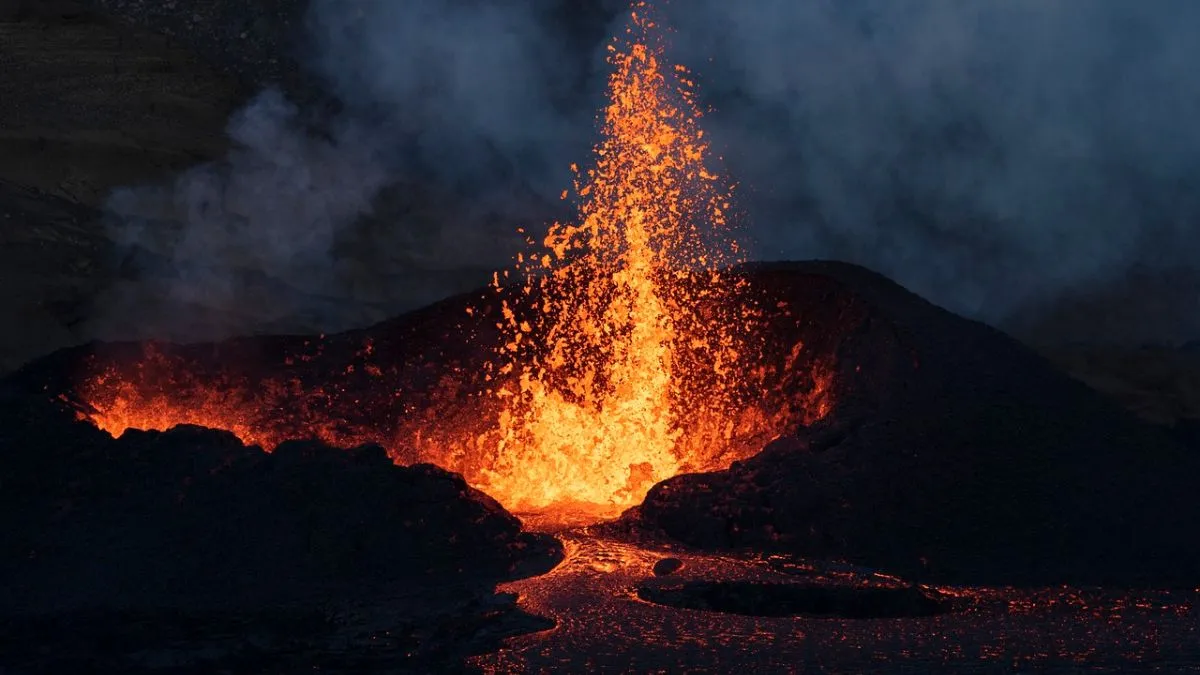Iceland, nestled within the North Atlantic and Arctic oceans, is a captivating haven that draws millions of tourists annually. Its allure lies in a natural mosaic encompassing glaciers, volcanoes, fjords, and geothermal springs, painting an unparalleled landscape. Yet, amidst this breathtaking panorama, Iceland houses a substantial number of active volcanoes, roughly 32 out of a total of around 130, sparking inquiries into which of these pose real threats and which among them are the most perilous.
Understanding Iceland’s volcanic landscape involves discerning volcanic categories based on their activity levels. An active volcano, capable of eruption or currently erupting, exhibits varying degrees of activity measured on the Volcanic Explosivity Index (VEI). Dormant volcanoes, though active, haven’t erupted in a considerable period but have the potential to do so. In contrast, extinct volcanoes are not anticipated to erupt again.
Height: 385 meters | Last eruption: 2023 | IEV: 0
Fagradalsfjall, situated in the Reykjanes Peninsula, typifies a rare and active volcano with a distinctive flattened top and steep sides, formed by lava emerging through thick ice. Recent eruptions in 2021, 2022, and 2023 brought attention to Fagradalsfjall, despite its dormant state for about 800 years prior.
Grímsvötn
Height: 1,725 meters | Last eruption: 2011 | IEV: 4
Grímsvötn, nestled beneath Iceland’s largest ice cap, Vatnajökull, represents a frequently active caldera volcano, known for its eruptions, notably in 2011. Its ash cloud disrupted air travel in Iceland and raised concerns about future eruptions due to heightened activity observed in 2020 and 2021.
Katla
Height: 1,512 meters | Last eruption: 1918 | IEV: X
Katla, partially shrouded by the Mýrdalsjökull ice cap, is among Iceland’s most active volcanoes, showcasing numerous eruptions since 2920 BC. Although seismic activity upsurged in 2016, 2017, and February 2022, Katla has remained inactive.
Bárðarbunga
Height: 2,021 meters | Last eruption: 2015 | IEV: X
Bárðarbunga, a stratovolcano in Vatnajökull National Park, erupted in 2014 after a century-long hiatus, releasing substantial sulfur dioxide that impacted Iceland’s air quality. Its connection with Grímsvötn often leads to mutual effects on their seismic and volcanic activities.
Hekla
Height: 1,491 meters | Last eruption: 2000 | IEV: 3
Hekla, located in southern Iceland, produced a pyroclastic flow during its 2000 eruption, a hazardous volcanic event characterized by swift streams of volcanic material and hot gas along the ground. Fortunately, the flow was limited in range.
Eyjafjallajökull
Height: 1,666 meters | Last eruption: 2010 | IEV: 4
Eyjafjallajökull, covered by an ice cap in southern Iceland, unleashed an ash cloud in 2010, causing significant air travel disruptions across Europe for six days. Despite subsequent seismic activities, it has remained dormant since.
The volcanic activity present in Iceland stands as a remarkable and at times, an unpredictable natural wonder. The multitude of active volcanoes not only contributes to a constantly changing landscape but also presents challenges regarding safety and risk management. While many of these volcanoes have remained inactive for extended periods, the looming potential for future eruptions serves as a constant reminder of the necessity for vigilance and ongoing research to gain deeper insights into these formidable natural giants.
Embarking on an exploration of Iceland, known as the land of fire and ice, is to delve into a realm where the sheer beauty and formidable power of nature coalesce. These Icelandic volcanoes bear witness not just to the island’s gradual formation over eons but also provide an enthralling glimpse into the geological mechanisms shaping our planet. Despite raising concerns at times, volcanic activity forms an intrinsic part of Iceland’s captivating geological chronicle, rendering this island a distinctive haven for those intrigued by the Earth’s enigmas.
Most dangerous volcano in Iceland
Among these volcanic wonders, historically, Katla has held a notorious reputation as one of the most apprehended due to its history of eruptions and its strategic location beneath the Mýrdalsjökull glacier.
